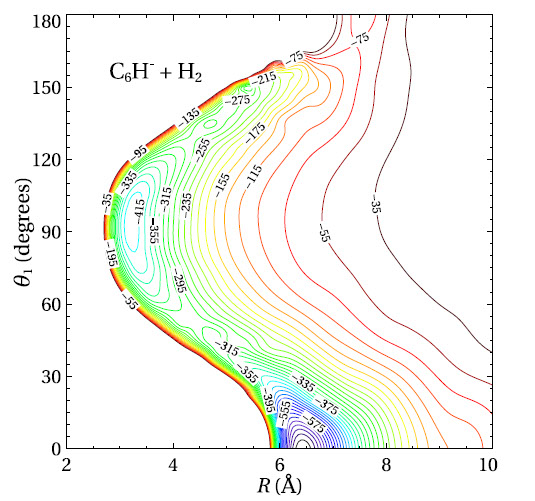Back to Publications
Kyle M. Walker, Fabien Dumouchel, Francois Lique, Richard Dawes, The first potential energy surfaces for the C6H--H2 and C6H--He collisional systems and their corresponding cross-sections. J. Chem. Phys. 145, 024314 (2016).

Molecular anions have recently been detected in the interstellar and circumstellar media. Accurate modeling of their abundance requires calculations of collisional data with the most abundant species that are usually He atoms and H2 molecules. In this paper, we focus on the collisional excitation of the first observed molecular anion, C
6H−, by He and H2. Theoretical calculations of collisional cross sections rely generally on ab initio interaction potential energy surfaces (PESs). Hence, we present here the first PESs for the C6H−–H2 and C6H−–He van der Waals systems. The ab initio energy data for the surfaces were computed at the explicitly correlated coupled cluster with single, double, and scaled perturbative triple excitations level of theory. The method of interpolating moving least squares was used to construct 4D and 2D analytical PESs from these data. Both surfaces are characterized by deep wells and large anisotropies. Analytical models of the PESs were used in scattering calculations to obtain cross sections for low-lying rotational transitions. As could have been anticipated, important differences exist between the He and H2 cross sections. Conversely, no significant differences exist between the collisions of C6H−with the two species of H2(para- and ortho-H2). We expect that these
new data will help in accurately determining the abundance of the C
6H−anions in space.